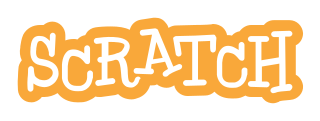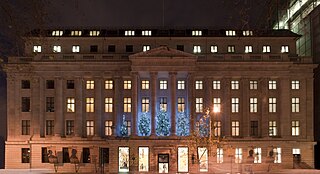Related Research Articles
The free software movement is a social movement with the goal of obtaining and guaranteeing certain freedoms for software users, namely the freedoms to run the software, to study the software, to modify the software, and to share copies of the software. Software which meets these requirements, The Four Essential Freedoms of Free Software, is termed free software.

Lisp machines are general-purpose computers designed to efficiently run Lisp as their main software and programming language, usually via hardware support. They are an example of a high-level language computer architecture, and in a sense, they were the first commercial single-user workstations. Despite being modest in number Lisp machines commercially pioneered many now-commonplace technologies, including effective garbage collection, laser printing, windowing systems, computer mice, high-resolution bit-mapped raster graphics, computer graphic rendering, and networking innovations such as Chaosnet. Several firms built and sold Lisp machines in the 1980s: Symbolics, Lisp Machines Incorporated, Texas Instruments, and Xerox. The operating systems were written in Lisp Machine Lisp, Interlisp (Xerox), and later partly in Common Lisp.
An esoteric programming language is a programming language designed to test the boundaries of computer programming language design, as a proof of concept, as software art, as a hacking interface to another language, or as a joke. The use of the word esoteric distinguishes them from languages that working developers use to write software. The creators of most esolangs do not intend them to be used for mainstream programming, although some esoteric features, such as visuospatial syntax, have inspired practical applications in the arts. Such languages are often popular among hackers and hobbyists.

The Internet Archive is an American digital library with the stated mission of "universal access to all knowledge". It provides free public access to collections of digitized materials, including websites, software applications/games, music, movies/videos, moving images, and millions of books. In addition to its archiving function, the Archive is an activist organization, advocating a free and open Internet. As of May 7, 2022, the Internet Archive holds over 35 million books and texts, 7.9 million movies, videos and TV shows, 842 thousand software programs, 14 million audio files, 4 million images, 2.4 million TV clips, 237 thousand concerts, and over 682 billion web pages in the Wayback Machine.

Madras Institute of Technology (MIT) is an engineering institute located in Chromepet, Chennai, India. It is one of the four autonomous constituent colleges of Anna University. It was established in 1949 by Chinnaswami Rajam as the first self-financing engineering institute in the country and later merged with Anna University. The institute gave India new areas of specialization such as aeronautical engineering, automobile engineering, electronics engineering and instrumentation technology. MIT was the first self-financing institute opened in India.

Birmingham Museum and Art Gallery (BM&AG) is a museum and art gallery in Birmingham, England. It has a collection of international importance covering fine art, ceramics, metalwork, jewellery, natural history, archaeology, ethnography, local history and industrial history.
Stuart Brisley is a British artist.
Adrian Ward is a software artist and musician. He is known for his generative art software products released through his company Signwave, and as one third of the techno gabba ambient group, Slub. His theoretical approach to generative and software art guides his practice, including contributing to the early principles of the livecoding movement.

Richard Matthew Stallman, also known by his initials, rms, is an American free software movement activist and programmer. He campaigns for software to be distributed in such a manner that its users have the freedom to use, study, distribute, and modify that software. Software that ensures these freedoms is termed free software. Stallman launched the GNU Project, founded the Free Software Foundation in October 1985, developed the GNU Compiler Collection and GNU Emacs, and wrote the GNU General Public License.

Brian Edward Cox is an English physicist and former musician who is a professor of particle physics in the School of Physics and Astronomy at the University of Manchester and The Royal Society Professor for Public Engagement in Science. He is best known to the public as the presenter of science programmes, especially the Wonders of... series and for popular science books, such as Why Does E=mc²? and The Quantum Universe.
jQuery is a JavaScript library designed to simplify HTML DOM tree traversal and manipulation, as well as event handling, CSS animation, and Ajax. It is free, open-source software using the permissive MIT License. As of May 2019, jQuery is used by 73% of the 10 million most popular websites. Web analysis indicates that it is the most widely deployed JavaScript library by a large margin, having at least 3 to 4 times more usage than any other JavaScript library.

Scratch is a high-level block-based visual programming language and website aimed primarily at children as an educational tool for programming, with a target audience of ages 8 to 16. Users on the site, called Scratchers, can create projects on the website using a block-like interface. Projects can be exported to HTML5, JavaScript, Android apps and EXE files using external tools. The service is developed by the MIT Media Lab, has been translated into 70+ languages, and is used in most parts of the world. Scratch is taught and used in after-school centers, schools, and colleges, as well as other public knowledge institutions. As of May 8, 2022, community statistics on the language's official website show more than 104 million projects shared by over 90 million users, over 686 million total projects ever created, and more than 100 million monthly website visits.

Wellcome Collection is a museum and library based at 183 Euston Road, London, displaying a mixture of medical artefacts and original artworks exploring "ideas about the connections between medicine, life and art". Founded in 2007, the Wellcome Collection attracts over 550,000 visitors per year and is advertised as "the free destination for the incurably curious". The venue offers contemporary and historic exhibitions and collections, the Wellcome Library, a café, a bookshop and conference facilities. In addition to its physical facilities, Wellcome Collection maintains a website of original articles and archived images related to health.

The GNU General Public License is a series of widely used free software licenses that guarantee end users the four freedoms to run, study, share, and modify the software. The license was the first copyleft for general use and were originally written by the founder of the Free Software Foundation (FSF), Richard Stallman, for the GNU Project. The license grant the recipients of a computer program the rights of the Free Software Definition. These GPL series are all copyleft licenses, which means that any derivative work must be distributed under the same or equivalent license terms. It is more restrictive than the Lesser General Public License and even further distinct from the more widely used permissive software licenses BSD, MIT, and Apache.
Iniva is the Institute of International Visual Art, a visual arts organisation based in London that collaborates with contemporary artists, curators and writers. Iniva runs the Stuart Hall Library, and is based in Pimlico, on the campus of Chelsea College of Arts.

New media art includes artworks designed and produced by means of electronic media technologies, comprising virtual art, computer graphics, computer animation, digital art, interactive art, sound art, Internet art, video games, robotics, 3D printing, and cyborg art. The term defines itself by the thereby created artwork, which differentiates itself from that deriving from conventional visual arts. New Media art has origins in the worlds of science, art, and performance. Some common themes found in new media art include databases, political and social activism, Afrofuturism, feminism, and identity, a ubiquitous theme found throughout is the incorporation of new technology into the work. The emphasis on medium is a defining feature of much contemporary art and many art schools and major universities now offer majors in "New Genres" or "New Media" and a growing number of graduate programs have emerged internationally. New media art may involve degrees of interaction between artwork and observer or between the artist and the public, as is the case in performance art. Yet, as several theorists and curators have noted, such forms of interaction, social exchange, participation, and transformation do not distinguish new media art but rather serve as a common ground that has parallels in other strands of contemporary art practice. Such insights emphasize the forms of cultural practice that arise concurrently with emerging technological platforms, and question the focus on technological media per se. New Media art involves complex curation and preservation practices that make collecting, installing, and exhibiting the works harder than most other mediums. Many cultural centers and museums have been established to cater to the advanced needs of new media art.

QRpedia is a mobile Web-based system which uses QR codes to deliver Wikipedia articles to users, in their preferred language. A typical use is on museum labels, linking to Wikipedia articles about the exhibited object. QR codes can easily be generated to link directly to any Uniform Resource Identifier (URI), but the QRpedia system adds further functionality. It is owned and operated by a subsidiary of Wikimedia UK (WMUK).

Blockly is a client-side library for the programming language JavaScript for creating block-based visual programming languages (VPLs) and editors. A project of Google, it is free and open-source software released under the Apache License 2.0. It typically runs in a web browser, and visually resembles the language Scratch. It is also being implemented for the mobile operating systems Android and iOS, though not all of its browser-based features will be available on those platforms.

Asteroid Day (also known as International Asteroid Day) is an annual global event which is held on the anniversary of the Tunguska event in 1908, when an asteroid leveled about 2,150 square kilometres (830 sq mi) forest in Siberia. The United Nations has proclaimed it be observed globally on June 30 every year in its resolution. Asteroid Day aims to raise awareness about asteroids and what can be done to protect the Earth, its families, communities, and future generations from a catastrophic event. For example, 2014 HQ124, discovered April 23, 2014, went past 1,250,000 km from Earth the same year, June 8, only 46 days after discovery, and 2015 TB145, went past at 490,000 km only 21 days after its discovery.
References
- ↑ "UK Museum of Ordure". UK. Retrieved 12 August 2015.
- ↑ "Museum of Ordure". lesliensinvisibles.org. 2011. Retrieved 12 August 2015.
- ↑ Cox, Geoff (2013). Speaking Code - Coding As Aesthetically Pleasing and Political Expression. The MIT Press, 55 Hayward Street, Cambridge, MA 02142: MIT Press. p. 126. ISBN 978-0-262-01836-4.
{{cite book}}: CS1 maint: location (link) - ↑ Brisley, Stuart. "About the UK Museum of Ordure". stuartbrisley.com. Retrieved 12 August 2015.